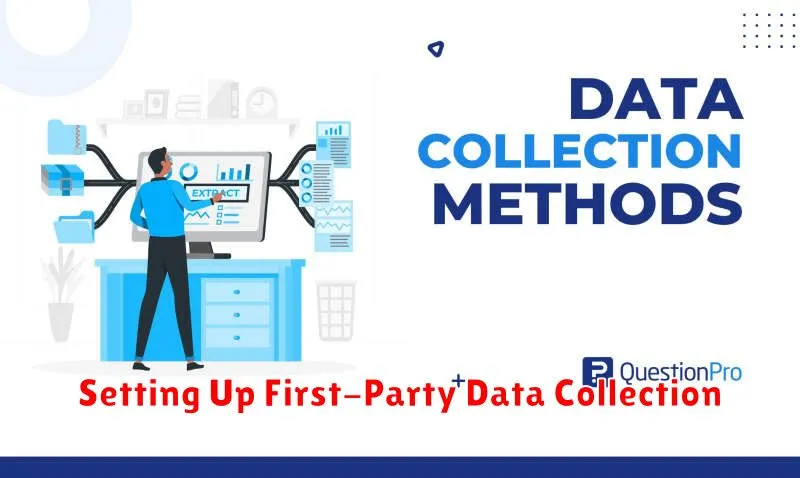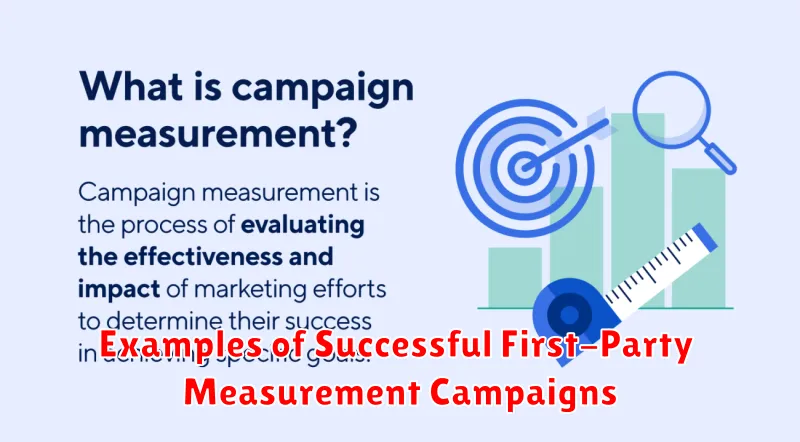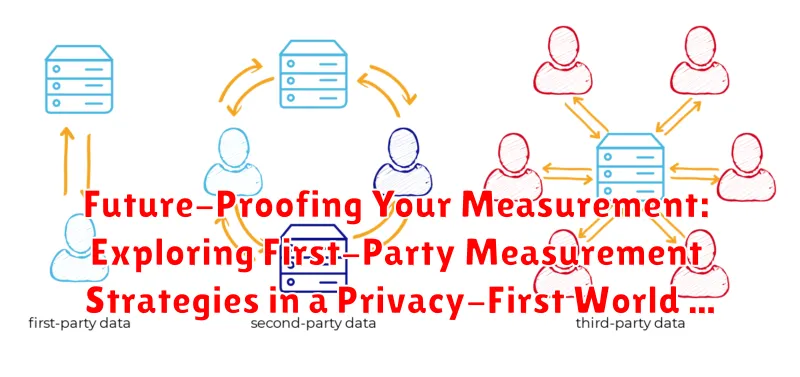In today’s rapidly evolving digital landscape, the increasing emphasis on user privacy is reshaping how businesses approach measurement. The traditional methods of tracking user behavior, heavily reliant on third-party cookies, are facing growing limitations due to regulatory changes like GDPR and evolving browser policies. This paradigm shift necessitates a strategic pivot towards first-party measurement, enabling organizations to gather valuable insights directly from their audience while respecting user preferences. This article explores the critical importance of future-proofing your measurement strategies by embracing the power of first-party data in a privacy-first world.
Navigating the complexities of modern digital marketing requires a profound understanding of first-party data and its applications. From enhancing customer experiences and personalizing marketing campaigns to optimizing website performance and attribution modeling, first-party measurement offers a sustainable and ethical alternative to traditional methods. This article will delve into practical strategies for collecting, managing, and leveraging first-party data effectively. We will examine various techniques such as server-side tagging, cookieless tracking solutions, and the implementation of advanced analytics tools, all with the aim of empowering businesses to make data-driven decisions while upholding user privacy.
Understanding the Shift to First-Party Data
The digital marketing landscape is undergoing a significant transformation, primarily driven by growing concerns about data privacy and evolving regulations. This shift necessitates a move away from reliance on third-party cookies and toward first-party data strategies.
Third-party cookies, which have long been a mainstay of online advertising, are increasingly being blocked by browsers and restricted by privacy laws like GDPR and CCPA. This has created a need for marketers to find alternative ways to understand their customers and measure campaign effectiveness.
First-party data, on the other hand, is information that businesses collect directly from their own customers through their websites, apps, and other owned channels. This data is considered more reliable and accurate because it comes directly from the source.
The move to first-party data is not merely a reaction to privacy concerns; it also presents an opportunity for businesses to build stronger relationships with their customers and deliver more personalized experiences. By leveraging first-party data effectively, companies can gain a competitive edge in the evolving digital ecosystem.
What are First-Party Measurement Strategies?
First-party measurement strategies involve directly collecting and analyzing data from your own sources, such as your website, apps, and customer relationship management (CRM) systems. This approach focuses on data you own and control, offering greater accuracy and compliance in a privacy-conscious environment.
Key strategies include:
- Website Analytics: Tracking user behavior directly on your website using tools like Google Analytics (configured for first-party cookies) or other privacy-focused analytics platforms.
- CRM Integration: Connecting your marketing efforts directly to CRM data, offering a comprehensive view of the customer journey and attribution.
- Customer Surveys and Feedback: Collecting direct feedback from customers to understand their needs and preferences.
- Server-Side Tracking: Implementing tracking mechanisms on your server, rather than relying solely on browser-based technologies, for improved data control and accuracy.
By employing these strategies, businesses can gain valuable insights into customer behavior and marketing performance while respecting user privacy and maintaining data ownership.
Benefits of Implementing First-Party Measurement
Implementing first-party measurement strategies offers numerous advantages in today’s privacy-conscious digital landscape. One primary benefit is enhanced data accuracy. By directly collecting data from your audience, you gain a more precise understanding of their behaviors and preferences, minimizing reliance on third-party data, which can be less reliable.
Another significant advantage is the ability to build stronger customer relationships. First-party data allows for more personalized experiences, leading to increased customer loyalty and engagement. This can manifest in tailored content, relevant product recommendations, and improved customer service.
Furthermore, adopting first-party measurement provides greater control over data usage. You have direct oversight over how data is collected, stored, and utilized, ensuring compliance with privacy regulations like GDPR and CCPA. This builds trust with your customers and safeguards your brand’s reputation.
Setting Up First-Party Data Collection

Establishing a robust first-party data collection process is essential for businesses seeking to understand their audience in a privacy-centric environment. The initial step involves defining clear objectives and identifying the specific data points that will inform marketing decisions.
Key Steps for Implementation:
- Define Data Collection Goals: Clearly articulate what insights you aim to gain from first-party data.
- Implement Website and App Tracking: Use tools like cookies (with consent), local storage, and SDKs to track user behavior on owned digital properties.
- Integrate CRM and Offline Data: Combine online data with CRM information and offline interactions (e.g., in-store purchases, survey responses).
- Establish Consent Mechanisms: Ensure compliance with privacy regulations by obtaining explicit consent from users before collecting and using their data.
- Data Validation and Storage: Implement processes to validate data accuracy and store it securely in a designated database or data warehouse.
Prioritizing data quality and user consent during setup will ensure the long-term effectiveness and ethical use of first-party data.
Using First-Party Data for Personalized Experiences
First-party data offers a unique opportunity to create personalized experiences that resonate with customers. By leveraging the information they willingly share, businesses can tailor interactions to individual preferences and needs.
Enhancing Customer Engagement
Personalization can significantly boost customer engagement. Examples include:
- Personalized product recommendations: Suggesting items based on past purchases or browsing history.
- Tailored content: Delivering relevant blog posts, articles, or videos based on user interests.
- Customized email campaigns: Sending targeted messages based on customer demographics and behavior.
Improving Customer Satisfaction
Personalized experiences demonstrate that a business values its customers. By providing relevant and helpful content, companies can improve customer satisfaction and build stronger relationships.
Analyzing First-Party Data to Improve Marketing Performance
Analyzing first-party data is crucial for optimizing marketing performance and achieving a higher return on investment. By leveraging the insights gleaned from this data, marketers can refine their strategies, personalize customer experiences, and ultimately drive better results.
Key Areas of Analysis:
- Customer Segmentation: Identify distinct customer groups based on behavior, demographics, and purchase history.
- Campaign Performance: Evaluate the effectiveness of different marketing campaigns by tracking key metrics like conversion rates and cost per acquisition.
- Website Behavior: Understand how users interact with your website, identify areas for improvement, and optimize the user experience.
Actionable Insights:
The analysis of first-party data should lead to actionable insights that inform marketing decisions. This may include adjusting targeting parameters, refining messaging, or optimizing website content. Continuously monitoring and analyzing your data is essential for ensuring that your marketing efforts are aligned with customer needs and preferences.
Integrating First-Party Data with Existing Tools
Effectively leveraging first-party data requires seamless integration with your current marketing technology stack. This integration allows you to centralize data and activate it across various channels.
Key integrations include:
- Customer Relationship Management (CRM) systems: Unify customer profiles with detailed interaction history.
- Marketing Automation Platforms: Personalize email campaigns and automate customer journeys based on behavior.
- Analytics Platforms: Enhance website and app analytics with enriched user data.
- Advertising Platforms: Improve ad targeting and campaign optimization using custom audiences.
Consider utilizing APIs and data connectors to facilitate smooth data transfer between systems. A well-integrated ecosystem ensures that your first-party data fuels smarter marketing decisions and improved customer experiences.
Ensuring Compliance and Privacy with First-Party Data
In the age of heightened privacy awareness, ensuring compliance with data privacy regulations is paramount when leveraging first-party data. This section outlines essential considerations for handling first-party data responsibly and ethically.
Key Compliance Considerations
- Transparency: Clearly communicate to users how their data is collected, used, and protected. This includes updating privacy policies and providing easily accessible information.
- Consent: Obtain explicit consent for data collection and usage, particularly for sensitive information or data used for personalized advertising.
- Data Minimization: Collect only the data necessary for the stated purpose. Avoid gathering excessive or irrelevant information.
- Data Security: Implement robust security measures to protect data from unauthorized access, breaches, and misuse. This includes encryption, access controls, and regular security audits.
- Compliance with Regulations: Adhere to relevant data privacy regulations such as GDPR, CCPA, and other applicable laws.
Best Practices for Privacy
Beyond compliance, prioritize user privacy by implementing anonymization techniques and data retention policies. Regularly review and update your data handling practices to align with evolving privacy standards and user expectations.
Examples of Successful First-Party Measurement Campaigns

Several brands have successfully leveraged first-party data to enhance their marketing effectiveness. These campaigns often demonstrate the power of understanding customer behavior and preferences directly, without relying on third-party tracking.
Case Study 1: Enhanced Product Recommendations
A leading e-commerce retailer implemented a first-party data strategy to personalize product recommendations. By tracking purchase history, browsing behavior, and stated preferences, they were able to suggest relevant products, leading to a 20% increase in click-through rates and a 15% boost in sales.
Case Study 2: Improved Email Marketing
A subscription-based service utilized first-party data to segment their email list based on engagement levels and content preferences. This allowed them to send targeted email campaigns, resulting in a 30% improvement in open rates and a 10% reduction in unsubscribe rates.
Case Study 3: Loyalty Program Optimization
A coffee chain analyzed first-party data from their loyalty program to identify customer segments and tailor rewards. By offering personalized promotions based on purchase frequency and preferred items, they saw a significant increase in customer retention and a higher average transaction value.

